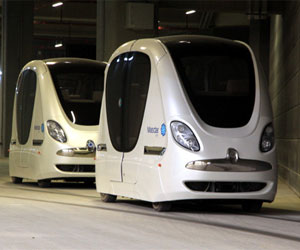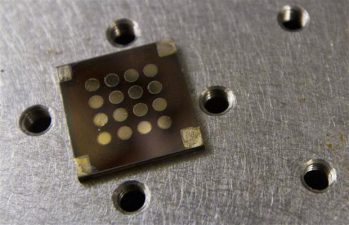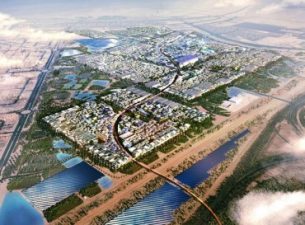When the PRT plan at Masdar was scrapped, what exactly did we lose?
The folks at Singularity Hub offer an interesting analysis of Masdar’s PRT failure. Why is it, David Hill wonders out loud, that we have made massive advancements in telecommunications but precious few in transportation?
Masdar gave us the perfect opportunity to take the next giant leap but we slipped and fell, our Fifth Element fantasies dashed in the process. Alas, the tiny self-navigating pods were simply too expensive. Or at least, the infrastructure necessary to lift them off the ground would have broken an already strained budget. What exactly have we lost?
First of all, there would have been a heavenly six square kilometer car-free zone; the little pod cars designed by Zagato and developed by the Dutch firm 2getthere wouldn’t have created any pollution at all. And yet the efficient fleet might have made up to 135,000 trips every day, allowing people a more private, comfortable public transportation experience.
This elevated system would have done away with taxis (which would have been great for those of us who use them, but not so great on the job-creation front.)
Lithium-phosphate batteries that could have kept the cars going for 60km on a mere 1.5 hour charge would have allowed each vehicle to take 40 trips without recharging. And the same infrastructure would have enabled Freight Rapid Transport – up to 5,000 trips a day.
Fortunately, we still have an underground metro and light rail transit system which will ultimately link Masdar with the rest of Abu Dhabi. There’s that. But if the emirate’s wealthand political will isn’t strong enough for radical advances in public transportation, then we might be stuck with the sluggish Fords and Hondas of old.
More On Masdar City:
Masdar City: Small Hiccups Or Total System Failure
NY Times: Masdar City Just A Futuristic Playground For The Rich





The writer doesn’t mention the undercroft, and erroneously refers to the PRT as elevated.
In fact, Masdar has not given 2getthere official notification of the change, see http://goo.gl/Nkj8d
No one really knows why the PRT system has been abandoned for sure.
That system is not all that expensive, but the undercroft that was required very likely was. The design called for constructing the entire city on a platform (the undercroft) so that the PRT vehicles could be operated without any interference from conventional traffic or pedestrians. It’s very likely that the cost of this undercroft was the main factor that has caused the Masdar developers to want to consider other solutions. Unfortunately, abandoning the undercroft might well require a complete redesign of the city as the next level up does not have wide streets, ample parking, good connectivity, spaces for charging EV’s, good access to goods movement locations and waste disposal locations. It remains to be seen if this redesign has been ordered and, if so, how what it will cost. Light rail and/or subway will simply serve a few locations in Masdar, mostly for outside
commuters. Internal circulation services will still be required as will services to and from the parking garages located outside of the Masdar wall. It’s a mess to be sure. There is also some concern about how much electricity the PodCars would need in relation to the estimated capacity of the solar and other sources that are planned. It has been said that they, so far, have been found to be insufficient and that outside power will probably be required. If so, the demands of the PodCars for recharing may also be a factor. Finally, people used to various MASS TRANSIT systems often view PodCars as having insufficient capacity in urban settings. This perception is also likely to be a factor that was considered.